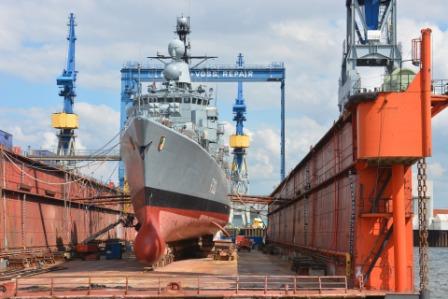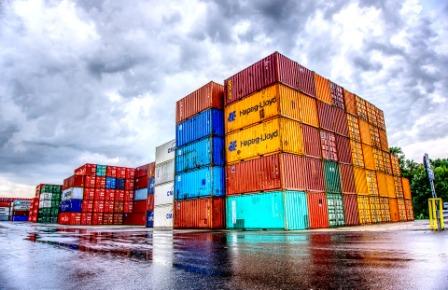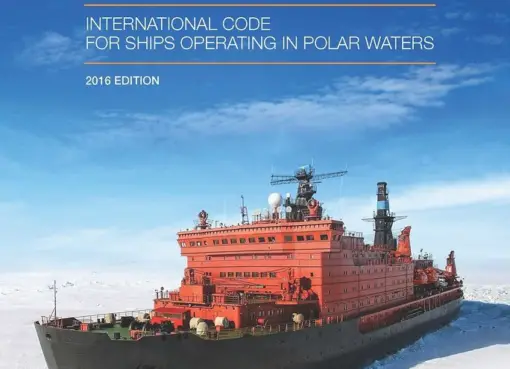In the initial stages, the owner will have a very broad idea of what kind of a ship he desires to build and this is known as a concept design. He now approaches a naval architect who gives further shape to his ideas and a preliminary design is drawn up.
The points to be considered while drawing a preliminary design are:
- The dimensions and displacement of the vessel depending upon the area in which the owner wants to mainly
- trade his vessel,
- Strength and stability of the vessel,
- Propulsion,
- General arrangement,
- Classification society regulations,
- Special features.
Once these factors are decided a fuller design can be prepared which is known as a contract design. This design can be circulated to various shipyards through tenders and quotations obtained for construction of the ship.
The sequence of events:
- Ship design,
- Drawing of plans – sheer plan, body plan, half breadth plan.
- Approval of plans,
- Filling of plans,
- Transfer of plan to plate,
- Plate preparation,
- Plates and sections,
- Production of sub-assemblies and assemblies,
- Fabrication of units,
- Erection and welding,
- Launching,
- Trials, tests, and certification.
Sequence of erection
The backbone of all ships is the keel which is a longitudinal girder or beam at the bottom of the ship, extending from bow to stern. This is the first stage of construction of the ship and several regulations refer to the keel laid date,
At the forward end of the ship is attached an upright or nearly upright stem which forms the front of the vessel,
A similar sternpost is usually set at the aft end of the keel,
The ship is then given a series of symmetrically curved ribs or frames that run transversely and that are fastened to the keel at their centers,
At and near their centers on the bottom of the ship the frames are made considerably larger than at the sides and are known as floors,
The frames are held in position by longitudinal stringers or clamps that run the full length of the ship and that is curved to conform with the shape of the hull,
Additional bracing is provided by beams extending across the width of the ship and fastened at either end to the opposite sides of the ribs,
In single deck vessels, only one set of beams is used while in multideck vessels the number of sets of beams corresponds to the number of decks,
The skin of the vessel is mounted outside the frame,
The skin is in the form of a number of plates welded to the frames, these are known as strakes,
The transverse bulkheads of metal plate run from side to side at several places in the length of the vessel, these bulkheads stiffen the frame and divide the ship into watertight bulkheads.
In earlier days, the whole ship was built in the docks but now the use of prefabrication technique is used whereby the structures are prefabricated at different places and then assembled in the docks.
Erection sequence in general starts from bottom to top and from aft to forward in the following sequence:
- Double bottom t tanks,
- Transverse bulkheads,
- Side shell with frames,
- Wing tanks,
- Deck units with girder,
- Accommodation modules,
- Deck fittings,
- Wiring,
- Final painting.
Lines plan
The form of the ship can be determined by passing a set of parallel planes through the hull at regular intervals and measuring the outlines of these planes. The plan that defines the form of the ship by use of such planes is known as the “lines plan”
When the planes are vertical and parallel to the centreline, a sheer plan is obtained which is a side view of the ship,
When the planes are vertical and perpendicular to the centreline, a body plan is obtained which is an end view of the ship,
When the planes are horizontal and parallel to the waterline, a half breadth plan is obtained which is a bird’s eye view of the ship.
Use of computers in shipbuilding
With the introduction of computers, the handling of complex mathematical calculations became easier. This was of great assistance in calculations and mathematical fairing became possible,
The ship’s hull form is defined by a series of equations and using the table of offsets as inputs, a three-dimensional mathematical representation of the ship’s structure could be defined, over a period of time, the equations defined used have been refined so that a smooth hull form can be produced,
Other particulars such as displacement, stability, subdivision, strength etc can also be calculated mathematically,
Computers are also used for research in hydrodynamics, ship motions, structural analysis etc,
Today cad/cam programs are available which can be used to design a ship according to one’s own requirements.
Besides hull design plan it is also possible to calculate hydrostatics and stability, internal structural strength designs, wind and sea resistance and power requirements,
Computers can be used to precisely cut and bend a large number of steel plates, despatch them and track the movement of various parts of the ship.
A more advanced version of numeral controlled machines are robots, which can be used to perform risk jobs repeatedly with higher output and low costs,
Robotic weldings systems are quite common in shipyards
Computers can be used for grit blasting, painting, cutting, welding, bending or shaping.
Bending of frames
Initially, frames were bent by heating and applying pressure by portable rams, dogs and pins were used to keep the frame in position,
Today, frame bending machines are available, which bend plates cold,
The machine has three clamps, which hold the plate in position and then 2 rams move the outer two clamps to left or right to bend according to the required shape of the frame,
After bending, the clamps are released and the frame is advanced,
The curvature of the frame is checked by using an inverse curve, this is the curve of the frame as generated by the computer from the lines plan and drawn on the frame as a mirror image, i.e. Opposite to the curve desired
The frame is bent in such a way that this curve becomes straight after bending.
Departments in a modern shipyard
Stockyard: steel plates are stored in a stockyard,
Marshalling area and plate preparation department: plates required for a project are calculated and assembled in this section, they are prepared over here by straightening, grit blasting and primering.
Plate and section marking and machining department: plates are further processed over here like edge preparation, bending, shaping, machining etc.
Pre-fabrication unit: different sections of the ship are fabricated over here, like stern and bow area, accommodation etc.
Engine shop: different components of the ship’s engine are assembled over here.
Steel plates are stored in a stockyard. When a shipyard gets a project to build a ship. Various lines diagrams are prepared for the vessel and the administrative office tells the shipyard about the requirement of steel. The required number of steel plates are collected in the marshaling area where they are prepared for use by straightening the bend plates, grit blasting to remove rust and premiering the plates with a special shop primer. These plates are then sent to the marking and machining department which prepare the plates according to the diagrams. These preparations include edge preparation, bending of frames and plates. Shaping to form smooth structures and machining. These prepared plates are then sent to various prefabrication units. Different parts of the vessel are then prefabricated and finally sent to the berth where the vessel is being built. In the berth first the keel is laid, earlier keel girders were used, but now only keel plates are used instead. Floors, frames, stiffeners etc are received from the various prefabricated unit and welded to the structure. Prefabrication technique has reduced a lot of on the spot welding thus reducing the time required for building a ship. Different engine components are received from the engine shop and installed onboard. Once the vessel is finally ready she is launched and various sea trials are carried out.
And finally thanx for visiting our website and I hope you like the post and it helps you to understand the ship constructions steps.if you like please do share. any suggestion please join our forum




